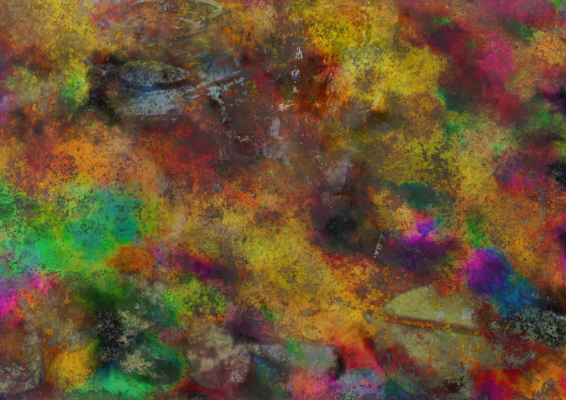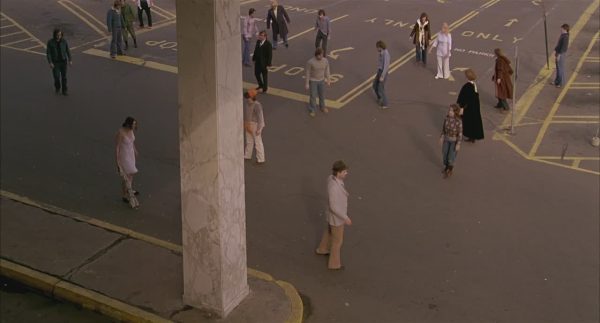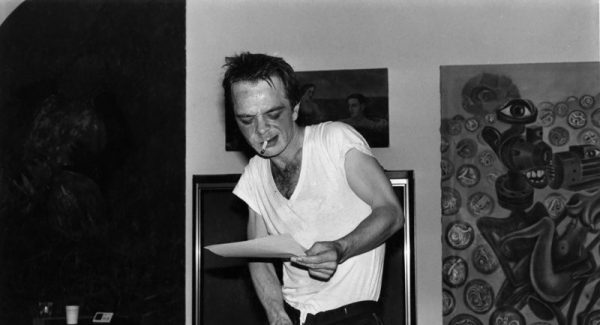Socrates’ graphophobia seems petty when set against the insidious imperialism of screen-based life: tablet computers of ever-increasing power and ever-decreasing size, a sense of global contraction, the rise of social networking as a new manifestation of advertising. Like writing, these forms of technological self-extension diminish our agency by challenging our conception of ourselves as consistent, centralised selves. We think of gadgets as our slaves, but the minute they acquire a will or agency of their own they threaten to overpower their users. From Mary Shelley to Isaac Asimov, speculative fiction is littered with technological experiments gone wrong.
Trecartin’s films, by contrast, invert this technological anxiety. In fact, for all they might unsettle us, they present the process as thrilling, impulsive, and fun. Many of his characters read like avatars from Second Life, and the manipulation of the film is so relentless that this fusion of physical digital selves is realised within the plane of the image. This might sound slightly sci-fi, but it’s commonplace today in practices like photographic re-touching and auto-tuning. For all that they need and love their smartphones and digital cameras, Trecartin’s characters hurl them across the room in fits of pique, take hammers to flatbed scanners. The union of self and technology is attended with frustrations; crucially, however, it is not burdened by worry, loss or fear.In Ryan’s Web 1.0 , a series of photo-collages, Trecartin recasts his collaborators/friends Lizzie Fitch, Veronica Gelbaum, Telfar Clemens and Ashland Mines as avatars of future fashion. These thumbnail visions of Trecartin’s world present the self as open network, pervaded by culture. Logos inscribe themselves on flesh, brands become bodies, and personality is realised in an act of synaesthetic over-identification with consumerist ephemera.
3: I Can’t Believe He Tried To Reverse-Physcho Me Into That Person
Footage is sped up, slowed down and reversed; colours strobe and bleed; flesh is post-production plastic; bodies exist in several places at once – in Trecartin’s intensely processed films, expression is altered by what it passes through. The medium might not be the message, but always inflects it. The titles of the films themselves – which read like corrupt data files, studded with punctuation errors and incomprehensible acronyms – are a neat symbol of the instability of Trecartin’s vision of human identity.
Our engagement with culture is rendered as a form of enmeshing or interbreeding. Empathy is metamorphosis: when a character identifies with an idea or person, they adopt their vocabulary or physical characteristics. Trecartin’s films reject the binarism of real and virtual, male and female, self and other, gay or straight, rationality and madness, surface and subtext, style and content, time and space. What matters here is not the search for structure in a disordered, disorientating world, but the free-form energy of self-invention. Online selves are multiple, unstable, an aggregate of images and words that can be remixed and revised; by the same token, they bring us freedom. We can upload, edit, erase, rework, and rebrand ourselves. But you know all this already. Chances are you already do it.
None of this would be possible were it not for photography. In Camera Lucida, Roland Barthes describes his acute unease at being photographed: ‘once I feel myself observed by the lens, everything changes: I constitute myself in the process of “posing”, I instantaneously make another body for myself, I transform myself in advance into an image.’ It’s this world of poses, transformations, and self-as-image that Trecartin’s films explore. Rather than be unsettled by it, as Barthes is, as I am, Trecartin revels in its possibilities.
4: I Hear A Self-Declared Narrator
In P.opular S.ky (section ish), a character played by Trecartin informs us that she wants ‘to live in a world where narration is the devil’. The ability to script oneself is an inalienable right, and anything that opposes that right must be rejected. David Shields expresses this antagonism to linearity in his book Reality Hunger: ‘Narrative is for dead people.’ Technology, which enables us to connect with others in unprecedented ways, has rendered obsolete the progressive plots and developmental character arcs we used to consider the norm.
Trecartin’s films eschew the limitations of train-track temporality in favour of a disjointed, free-associative style that purposefully fails to iron out multiplicity or contradiction. This is as close to hyperlinking as you can get within a video art context. If we were to look for an analogy in physics, we might say that the Newtonian narrative of cause and effect has given way to the energetic randomness of Heisenberg’s uncertainty principle. Characters – if they can be so called – exist wherever and whenever they want, and only solidify when subjected to the camera’s gaze.
These artworks illustrate the possibilities of self-narration, particularly those revealed to us when language begins to break down. Starting life as scripts in the form of plays, monologues, poetry or word-fragments, his films’ foundation, is textual. He repurposes language to his own ends, warping syntax, dissecting compound words and forming a small dictionary’s worth of neologisms in every film. Take the following example, quoted at random from the script of The Re’Search:
Neighbourhood Yes, Ocean Over, Yeah! !Connect!
I sent You, A =Mother Figure Function=!
I sent You, A =Mother Figure Function=!
Compassicolic-Ish-Us ‘Capital Structure’
What?
OK Re-Write= CORRECT*
*Compassionate Capitalism
The linguistic frenzy masks a coherence of theme and tone, a Joycean playfulness with puns and word-associations and a consistent, if subversive, reassignment of textual symbols. No other writer I know could remind me at once of Gertrude Stein and Steve Jobs, modernist poetics and prefix-happy marketing. While the films seem to improvise themselves before your eyes, random and self-propagating, they are the result of an intensive process of scripting and editing. These activities just as easily apply to the construction of identity.
5: U’r Not The Only Sky 2Touch That Star
It is appropriate that I first encountered Trecartin’s films on the internet. He is an artist, but for me it is the online world, and not the white-walled gallery, that is his native environment. If his work can be said to be ‘about’ any single topic, it might be this: the changes wrought to personal identity by the arrival of this thing we call The Internet.
It would be reductive to yoke Trecartin to a specific technology, yet the high-speed nature of his films, not to mention their frequent visual references to the World Wide Web, steers us towards such a reading. There is an undercurrent of utopianism in his work, the implicit belief that technological progress has released us from the need to define ourselves in any fixed, inflexible way. Identity is presented as a form of fancy dress: try on a new self, and as soon as it gets boring try another. Watching his films, it is easy to feel liberated, excited, and free – to go along with them, in other words. It is also possible to feel trapped, unsettled, and alienated; to want to critique everything they stand for. For me, however, it is precisely those contradictions that make Trecartin’s work compelling.
ABOUT THE CONTRIBUTOR
's debut novel
Arkady was published by Fitzcarraldo Editions in March 2018. He writes on contemporary art for
Frieze,
Art Agenda, and other publications. He is a contributing editor at
The White Review.




